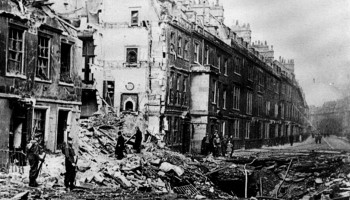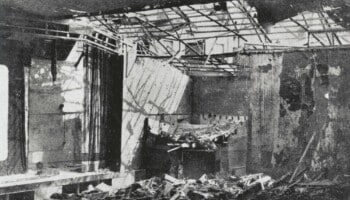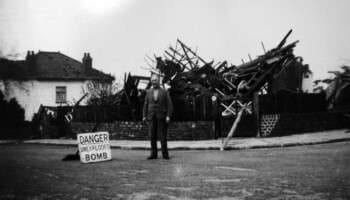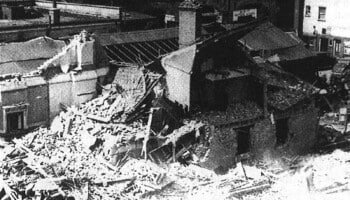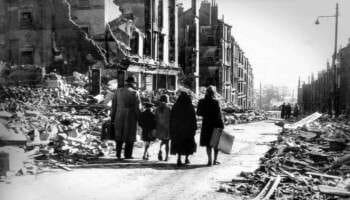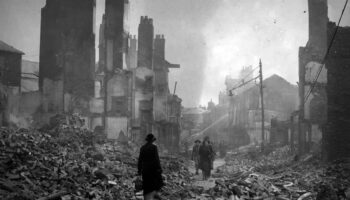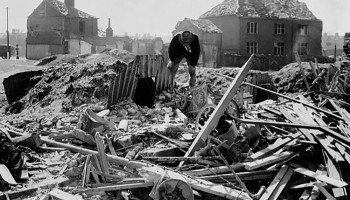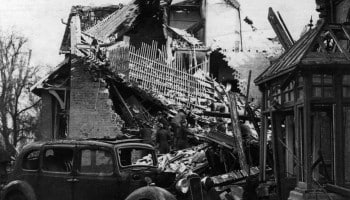Home » Resources » UXO City Guides »
UXO City Guide
Home Office Bombing Statistics for Southampton
Record of German Ordnance dropped on the County Borough of Southampton
High Explosive Bombs (All types)
2,510
Parachute Mines
30
Oil Bombs
12
Phosphorus Bombs
0
Fire Pots
0
Pilotless Aircraft (V-1)
2
Long-range Rocket Bombs (V-2)
0
Weapons Total
2,554
Area Acreage
9,192
Number of items per 1,000 acres
277.9
Why was Southampton targeted and bombed in WWII?
Southampton was a strategic port city, as well as housing key military infrastructure, aeroplane factories and a variety of industries that were vital to the UK’s war effort. Owing to its location on the south coast of the UK, Luftwaffe bombing raids often came with short warning and RAF fighter aircraft could often only be deployed after bombing raids had already begun.
Southampton endured a significant number of air raids throughout WWII, with the city centre, docks and industrial areas sustaining substantial damage. This was mainly due to the military industry based within and around the city, such as the Supermarine aircraft works in Itchen and Woolston, as well as the aeroplane factory at Southampton Airport in Eastleigh.
All of which were involved in the construction of Supermarine Spitfires, which was one of the primary fighter aircraft deployed by the Royal Air Force (RAF) to defend Britain from aerial attack. Each of these factories were specifically targeted and bombed on several occasions in 1940, which led to fighter production being relocated to the west-midlands and other areas in the west of the UK.
Other targets within and around Southampton that were known to the Luftwaffe included the General Motors assembly works, the Southampton Railway Works at Eastleigh, the RAF Eastleigh aerodrome, RAF Hamble Aerodrome, Vospers British Power Boat Company at Hythe, as well as fuel depots, ship building yards and transport infrastructure around the port of Southampton.
With a major ship building yard situated a short distance downstream from the Supermarine factory, Woolston attracted a lot of attention from the Luftwaffe during WWII. This bombing raid caused significant damage in Woolston and completely destroyed the Supermarine factory and the neighbouring Itchen Ferry village on 26th September 1940. During these two daylight raids, approximately 70 tons of H.E. bombs were dropped on the local infrastructure and surrounding civilian areas.
Southampton Docks, as seen above – are situated south of the city centre and presented a major Luftwaffe bombing target. The port facilities and infrastructure were heavily damaged during WWII and several ships anchored in the port, or undergoing repair, sunk as a result.
From mid-November 1940, major provincial cities and important industrial centres were targeted including the centres for aircraft production. In early 1941 another wave of attacks began, primarily against ports – to reduce the UK’s ability to continue supporting the war effort. As Southampton was both an industrial port city and comprised several aircraft factories, its location just 80 miles from occupied France led to the city being targeted repeatedly during this period.
Home Office Bombing Statistics for Southampton
Home Office bombing statistics indicate that nearly 2,554 items of ordnance were recorded to have been dropped on the County Borough of Southampton over the course of the war. This included an estimated 2,510 High explosives bombs, 30 parachute mines, 12 oil bombs and two pilotless aircraft, resulting in a bomb density of almost 280 items of ordnance per 1,000 acres – which is considered to be very-high.
These statistics do not take into account the almost 31,000 Incendiary bombs dropped over Southampton and any bombs that fell unrecorded during these heavy raids, many of which fell into areas that had already been previously bombed. These unidentified items, falling unnoticed are what pose a potential risk to construction today.
When assessing the bomb density within each area of the city, the town centre sustained a density equivalent to 976.5 items of ordnance per 1,000 acres, which was a higher density of bombing than any London Borough.
Major bombing raids in Southampton
Some of the heaviest raids occurred on the following dates:
- 24th-26th September 1940 – 170 H.E. bombs and 8 UXBs dropped on Supermarine Works and areas of Itchen, Woolston and Northam. Itchen Supermarine works completely destroyed.
- 23rd November 1940 – 430 H.E. bombs and 9 UXBs dropped over city, 3,500 buildings sustained damage.
- 30th November 1940/1st December 1940 – 120 German bombers, 800 H.E. bombs and 64 UXBs dropped over the city.
- 11th March 1941 – 65 H.E. bombs and 11 UXBs on Southampton City Centre.
- 8th July 1941 – 149 H.E. bombs and 19 UXBs were recorded in the general area of Southampton City Centre1.
In total, Southampton was subject to 57 individual bombing raids, the majority of which occurred during autumn and winter 1940. Around 475 tons of high explosive bombs were dropped on the city and its environs, leading to the damage and destruction of approximately 45,000 properties.
Local bomb maps for Southampton show a significant density of bombing and damage in the city centre, around the docks and the industry on either side of the River Itchen and River Test.
The consolidated bomb plot map and war damage map included above, shows the extent of the bombing sustained by Southampton during 1940 – 1941. Whilst bombing incidents and damage were most dense around the docks and city centre, these maps show that the bombing was not restricted to the city’s landmarks and areas of importance.
Serious damage was recorded far out of the city centre – including in the suburbs of Highfield and Itchen; close to the Supermarine aircraft works to the north and east of Southampton City Centre respectively.
It should also be noted that, villages on the extremity of the city, including Marchwood, Netley, West End, Nursling and Rownhams, which were located outside Southampton County Borough, were also subject to a considerable number of bombing incidents due to their general proximity to the city.
During the major raids on 23rd and 30th November 1940, the city’s Auxiliary Fire Service (AFS) were short of firefighters and reinforcements had to be brought in from other areas of Hampshire – and water, gas and electricity supplies were cut off in many areas across the city.
Craters, rubble, debris and unexploded bombs (UXBs) littered much of the city’s central areas, hindering firefighting and rescue efforts in the week that followed. The city’s authorities struggled to cope with the aftermath of this raid which led to a mass evacuation of the city’s civilian population.
Allied Activity
In preparation for D-Day and the invasion of occupied Europe, Southampton saw a great deal of Allied military activity. The areas surrounding Southampton and coastal areas of Hampshire contained numerous dispersed military camps and depots, as the port city was to play a huge role in the build-up and disembarkation of military personnel and equipment.
Around 50,000 troops and 7,000 vehicles were stationed in numerous dispersed camps throughout D-Day marshalling ‘Area C’, situated in districts and boroughs to the north of Southampton during May and June 1944.
Troops and equipment stationed here primarily used the port facilities around Southampton to travel direct to Normandy in the days following the invasion of occupied France on 6th June 1944. Landing Ship Transports, Landing Craft Transport, Motor Transport Ships, hospital carriers and other Royal Navy ships were used to transport and escort this element of the allied invasion force. As such, Southampton and the surrounding environ saw concentrated usage by military personnel, increasing the likelihood that items could have been lost, buried or otherwise discarded during this period of intense activity.
Can UXO still pose a risk to construction projects in Southampton?
The primary potential risk from UXO in Southampton is from items of German air-delivered ordnance which failed to function as designed. Approximately 10% of munitions deployed during WWII failed to detonate, and whilst efforts were made during, and after the war to locate and make UXBs safe, not all items were discovered. This is evidenced by the regular, on-going discoveries of UXO during construction-related intrusive ground works across the UK – not just in Southampton.
Occasionally items of British explosive ordnance are also encountered – often associated with WWII defensive features, Home Guard training exercises and D-Day camps/marshalling areas.
I am about to start a project in Southampton, what should I do?
Developers and ground workers should consider this potential before intrusive works are planned, through either a Preliminary UXO Risk Assessment or Detailed UXO Risk Assessment. This is the first stage in our UXO risk mitigation strategy and should be undertaken as early in a project lifecycle as possible in accordance with CIRIA C681 guidelines.
It is important that where a viable risk is identified, it is effectively and appropriately mitigated to reduce the risk to as low as reasonably practicable (ALARP). However, it is equally important that UXO risk mitigation measures are not implemented when they are not needed.
While there is certainly potential to encounter UXO during construction projects in Southampton, it does not mean that UXO will pose a risk to all projects. Just because a site is located in Southampton does not mean there is automatically a ‘high’ risk of encountering UXO.
A well-researched UXO Risk Assessment will take into account location specific factors – was the actual site footprint affected by bombing, what damage was sustained, what was the site used for, how much would it have been accessed, what were the ground conditions present etc.
It should also consider what has happened post-war – how much development has occurred, to what depths have excavations taken place and so on. This will allow an assessment of the likelihood that UXO could have fallen on site, gone unnoticed and potentially still remain in situ.
Sources
1Southampton City Archives
Recent UXO discoveries in Southampton
Since the war, many items of UXO have been discovered across multiple cities within the UK, with Southampton no exception. See the news articles below about UXO incidents and discoveries from national and local press in Southampton.
1st Line Defence keep up-to-date with relevant and noteworthy UXO-related news stories reported across the UK, and you can browse through these articles using the buttons below.
Get UXO risk mitigation services from a partner you can trust
UXO City Guides
Got a project in Southampton? Need advice but not sure where to start?
If you need general advice about UXO risk mitigation in Southampton, get in touch.
Contact Us
* indicates required fields







